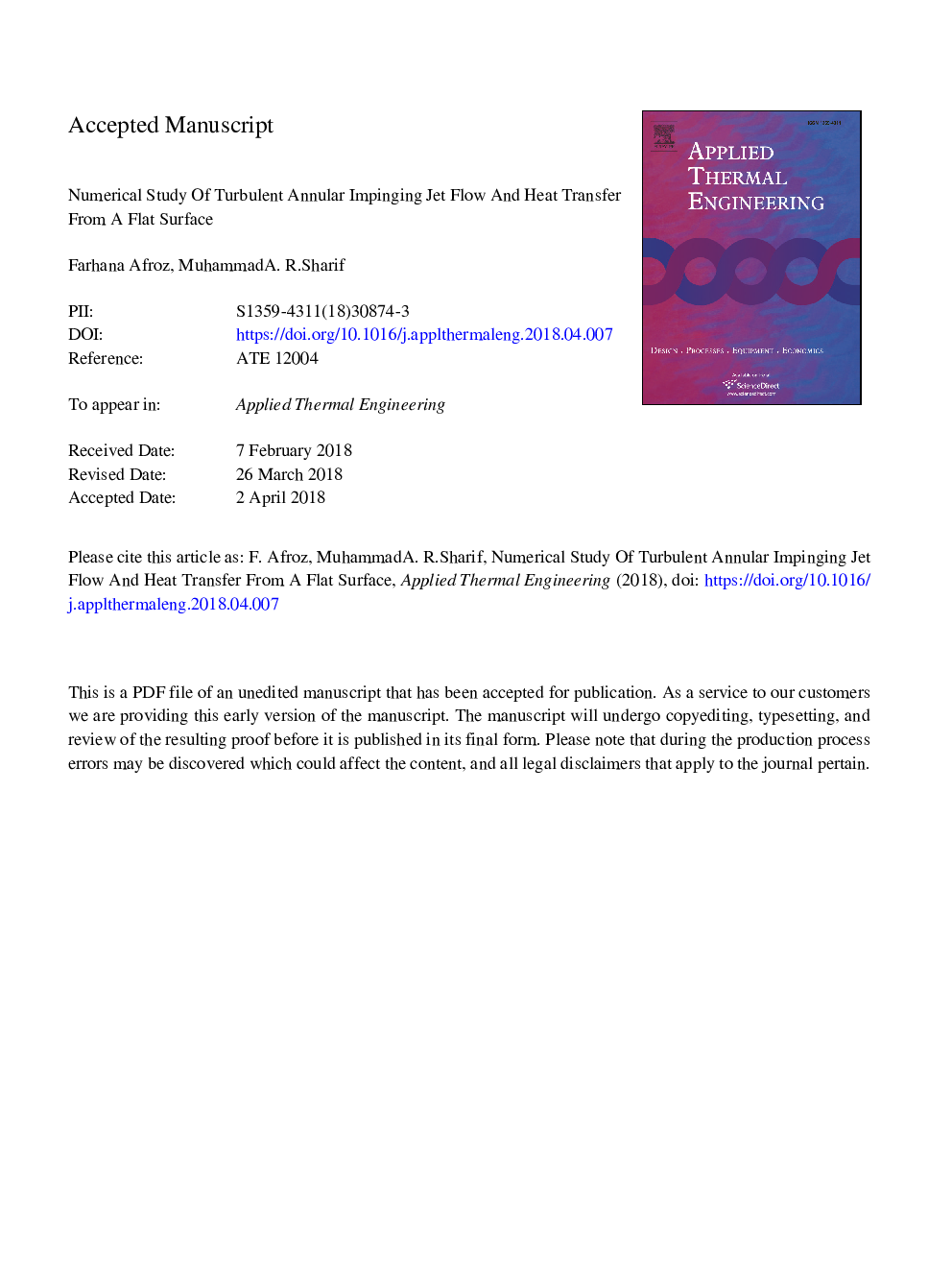| کد مقاله | کد نشریه | سال انتشار | مقاله انگلیسی | نسخه تمام متن |
|---|---|---|---|---|
| 7045226 | 1457091 | 2018 | 30 صفحه PDF | دانلود رایگان |
عنوان انگلیسی مقاله ISI
Numerical study of turbulent annular impinging jet flow and heat transfer from a flat surface
ترجمه فارسی عنوان
مطالعه عددی جریان جابجایی و انتقال حرارت از یک سطح صاف به صورت حلقوی آشفته
دانلود مقاله + سفارش ترجمه
دانلود مقاله ISI انگلیسی
رایگان برای ایرانیان
کلمات کلیدی
موضوعات مرتبط
مهندسی و علوم پایه
مهندسی شیمی
جریان سیال و فرایندهای انتقال
چکیده انگلیسی
This paper presents the results of a numerical investigation of fluid flow and heat transfer due to a turbulent annular jet impingement on an isothermally heated flat surface. Annular impinging jets enhance the heat transfer and spread it more uniformly over the impingement surface compared to the round impinging jet, and have one noteworthy characteristic of forming a reverse stagnation flow. A parametric numerical study for turbulent annular jet impingement is conducted for various blockage ratios (0.4-0.8) and non-dimensional jet exit-to-target plate separation distances (0.5-4.0) at a wide range of jet exit Reynolds number (5000-25,000). The numerical computation on a highly refined mesh is performed using the ANSYS Fluent commercial code and the computational process is validated against other published experimental data on similar flow and geometric configuration. In order to choose an appropriate turbulence model for the computations, the performance of few different turbulence models is evaluated based on the comparison against experimental Nusselt number distribution on the flat surface. The Realizable k-ε model was chosen over the other turbulence model in this study. There are two different distinguished critical jet-to-target plate distance for a specific blockage ratio and jet exit Reynolds number, that generates three different flow patterns. When the separation distance is large, the impinging annular jet flow patterns, defined as flow pattern-1, is comparable/similar to the flow patterns of conventional impinging round jet. For intermediate separation distance, a doughnut-shaped recirculation region develops just downstream of the annular nozzle exit and a reverse stagnation flow occurs near the domain axis and the impingement surface, which is defined as the flow pattern-2. For small separation distance, the flow diverges more to the outer side of the annular slot and a reverse stagnation flow develops, which influences the heat transfer rate on the impingement plate. This is designated as flow pattern-3. The separation distances at which the transition from one flow pattern to the other occurs are designated as Hc1 and Hc2. These critical distances are determined for each combination of the blockage ratio and the Reynolds number considered. Additionally, the heat transfer processes are analyzed and the average Nusselt number as a function of the blockage ratio and Reynolds number is calculated and presented.
ناشر
Database: Elsevier - ScienceDirect (ساینس دایرکت)
Journal: Applied Thermal Engineering - Volume 138, 25 June 2018, Pages 154-172
Journal: Applied Thermal Engineering - Volume 138, 25 June 2018, Pages 154-172
نویسندگان
Farhana Afroz, Muhammad A.R. Sharif,
